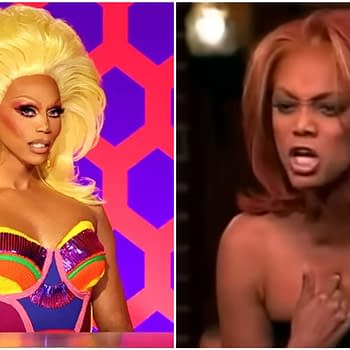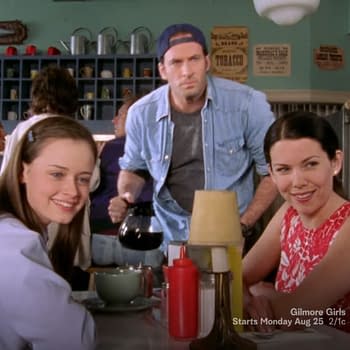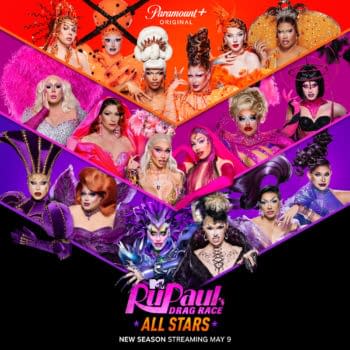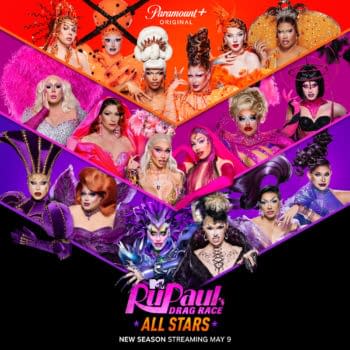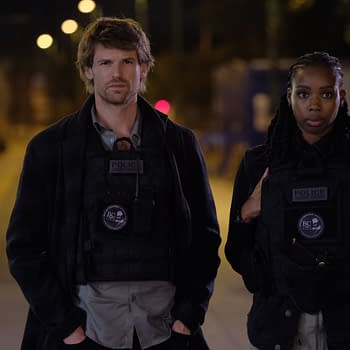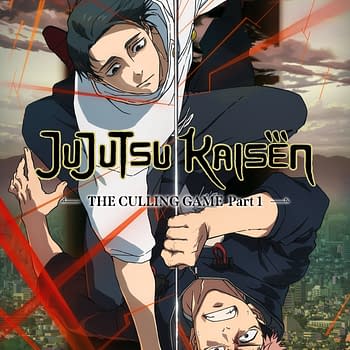Posted in: ABC, Amazon Studios, CBS, Fox, Hulu, NBC, Netflix, streaming, TV, YouTube | Tagged: ballroom, ballroom culture, bleeding cool, cable, drag, drag culture, fx, madonna, paris is burning, pose, rupaul, streaming, television, tv
Ballroom Culture: Category is Television I: Madonna, "Paris" & More
Yes, you read that correctly, the category tonight is television. No, not characters in television – how ballroom culture has been portrayed on television and how media has been shaped by the underground LBGTQ culture (and vice-versa). Now, you may be wondering "how is ballroom dancing gay" and to that, I say duh – but I also need to correct you. We're not talking about your Aunt Cathy's Dancing with the Stars kind of ballroom here. We're talking about big, loud, gay as hell, cross-dressing events of the century that happen in a warehouse in Brooklyn, baby. In case you're still confused, keep reading. And if you're not, maybe keep reading anyway, because the history of ball culture is always fascinating.
What is ballroom culture? "Balls" are events where houses compete against each other in different categories until one is left standing and wins the crown. Now, this is not a beauty pageant, though drag pageants are related to ballroom culture. Balls are a celebration of the people who were shunned by society, so how did they go from an underground rebellion to the pinnacle of modern LBGTQ media?
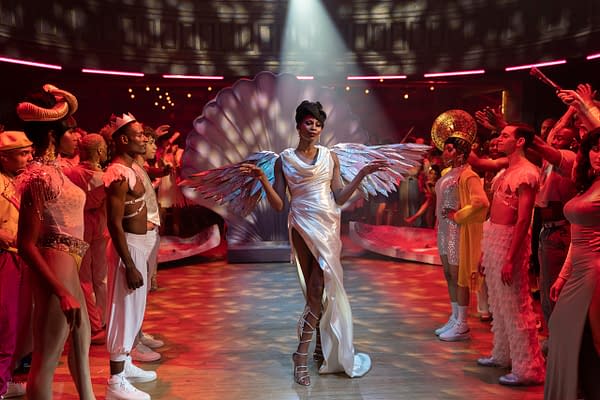
A Brief History of Ballroom Culture
To answer that question, we need to go back in time to the start of ballroom culture. Back in the late 1800s/early 1900s, they were simply called drags and they were events organized in direct defiance of anti-cross-dressing laws. Why the government ever felt the need to mandate against men in skirts and corsets is beyond me. I mean, if they want to experience pain for the sake of beauty, by all means, I'll just be over here in the world's most comfortable suit. But I digress. So, the gay community organized these balls where people could dress in clothes that made them feel confident and comfortable…and all was well and good. Fast forward to the 1920s/1930s when playing with gender stereotypes (i.e. women's suits, short hairstyles, more effeminate male fashions) became trendy. Drags exploded and also brought forth drag pageants – but as this was pre-civil rights era, they were racist AF.
Fast forward to the 1960s – drag pageants are an established part of underground queer counter culture…but they're still racist. This is best proven by 1968 Cannes documentary The Queen. It's a hugely influential piece of gay cinema, showing a snapshot of life just before the Stonewall riots and gay liberation, but the realness of it lies in the third act. Contestant Crystal LaBeija was crowned third runner up with white queens taking the upper two titles – and the winner was friends with the judges and organizers. Crystal, who was reigning Miss Manhattan, was fully aware the pageants were racist, but she had had enough and stormed off stage.
Now, Miss LaBeija decided to do something about the injustice, so in 1972, she creates the first house – house LaBeija – and decides that the LBGTQ community of color needed their own place away from the white pageant world – with Black judges where all contestants would be judged fairly and race would not be an issue. These balls were not beauty pageants; they walked to African and Latin music and breathed life into an overly-structured hierarchy. Other legendary houses (Dupree, Extravaganza, and Ebony) were created around this time and it grew into the underground counter-culture for those on the fringes of society with no one else to turn to.
So how did the ballroom culture become so mainstream and finding itself in everything from Madonna videos to Emmy-winning TV series, with even the language becoming part of the mainstream pop-culture lexicon?
Enter The 1980s
Jump to the giant hair, drug-fueled party underground of 1980s New York queer culture. Cross-dressing is no longer illegal and beginning to gain a decent level of acceptance (hello, Diane Keaton in Annie Hall), but ball culture still remains firmly planted in the New York and Philadelphia gay scenes. Why?
Enter: why I love ball culture so much. It's because of the houses and the safe spaces balls create. Now, you may have seen an episode of Pose and think that houses are a little cutthroat, but in reality, they're a family. Found or biological, a family is a network of support. Those who band together in spite of being shunned or ignored by those who should be their support network prove that family is what's important, not how you come by it. Speaking as a certified carnie, I have my fair share of found family, and there are a lot of similarities between the two communities who are so defined by being notoriously disenfranchised. However, I do enjoy ball culture a little more: the music is better and there are more sequins, and far less cotton candy (sorry carnie fam).
You probably remember the LGBTQ community of the 1980s as being defined by the HIV/AIDS epidemic, but that went a whole lot deeper than what you may remember. The 1980s saw an increase of young people coming out…and sadly being disowned by their boomer parents who didn't care to understand their children. House mothers have been taking children in and giving them a sense of community and keeping them out of trouble for ages, but it became especially important during this time when the community was terrified and actively shunned and discriminated against, even more so than they already were.
So, the community is banding together, and one Madonna has a dance called "voguing" brought to her attention. She records "Vogue" in 1990 and features the dance that is iconic and synonymous with balls. And it flew completely under the radar and nobody cared about it…oh, wait, no. The exact opposite of that happened and it propelled gay dance culture (specifically ballroom culture) from the underground into the spotlight. Two years later, the documentary Paris is Burning wins the Grand Jury Award at Sundance and sparks rave reviews and really introduces ball culture to the mainstream who had no idea it even existed.
And lo and behold, that is how ballroom culture journeyed from an underground movement of racists and cross-dressers to the cultural explosion we see today in shows like Drag Race. Oh, wait – I didn't get that far? Dang, there really is a lot to cover in over a century. Well, it looks like that's another history lesson for another day very soon. In the meantime, sleep tight, and don't let the sequins bite.



